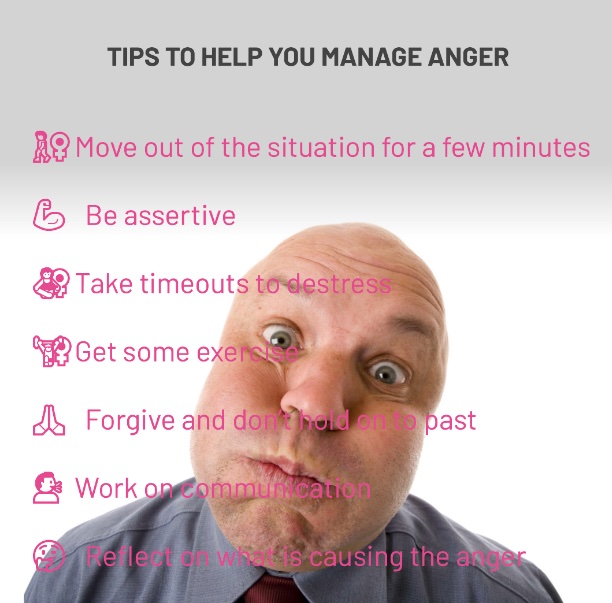Tale of a Dog's Tail
Story
It was a crisp autumn day in the quaint village of Bullsville, and the golden leaves had begun to fall from the trees. A young girl named Pamela lived in her mansion nestled among the greens. Pamela was a gentle and kind-hearted soul with a heart full of love and a spirit full of life. She spent her days wandering through the fields and meadows, admiring the beauty of nature and dreaming of the day when she would find true love. She had grown up watching her parents fight constantly, and as a result, she had become a lonely and withdrawn teenager. She longed for someone to love and care for her, to protect her from the chaos of her family life.

One fine day, as she was strolling through the village, she chanced upon a young gentleman named David. David was a handsome, tall man with bright blue eyes and a charming smile that could melt any lady’s heart. Pamela was instantly smitten with him, and they soon struck up a conversation that lasted for hours. From that day forward, they became inseparable, spending all their days together, exploring the countryside and discussing their hopes and dreams.
However, not everyone was pleased with Pamela’s newfound happiness. Her mother, Samantha, secretly enquired about the whereabouts of David. Her informant mentioned that he was a laborer at the local shoe factory. She was filled with rage.
Samantha was a high-headed, arrogant woman with a sharp tongue and a temper that could ignite any moment. From the very beginning, she made things difficult for David. She would criticize him for minor things, like how he dressed or spoke. Pamela tried to intervene, but her mother’s anger would always flare up, and she would become even more challenging to deal with.
She would tell lies about him to Pamela and make him feel unwelcome whenever he came to visit. The more David tried to reason with her, the angrier she became and the more vicious her attacks on him.
Samantha began to spread rumors about David, telling anyone who would listen that he was a cad and a scoundrel, that he had no respect for women, and that he was only interested in Pamela’s fortune. Pamela was devastated by these rumors but refused to believe them, knowing that David was honorable.
On Pamela’s birthday, Samantha decided to throw a small dinner party at their home.
As the night of the dinner party approached, Pamela asked her mother if David was also invited. To her surprise, Samantha replied, “I didn’t invite him, Pamela. He’s not good enough for us.”
Pamela couldn’t understand why David wasn’t invited, and when she asked her mother about it, Samantha’s response was dismissive.
“He’s just a nobody, Pamela. You can do better than him,” Samantha said, her tone condescending.
Pamela was taken aback by her mother’s comment. David was kind and caring, and Pamela loved him for who he was, not for his social status or wealth.
Feeling humiliated and frustrated, Pamela confronted her mother. “Why did you not invite David? He’s important to me, and he deserves to be here.”
But Samantha refused to listen. “He doesn’t fit in with our crowd, Pamela. I don’t want him here; end of the discussion,” Samantha snapped.
The conversation quickly became an argument, with Samantha refusing to back down. Pamela was hurt and disappointed, feeling like her mother didn’t respect her feelings and choices.
She tried to reason with Samantha, explaining that David was kind, respectful but Samantha was adamant.
Pamela was hurt and frustrated. She had tried to make her mother understand that David was important to her, but Samantha wouldn’t listen.
David decided that he had had enough. He couldn’t take it anymore, the constant criticism and the feeling of being unwanted. He raised the issue with Pamela’s mother, hoping to find a solution that would allow them all to get along. But instead, she got offended.
Samantha’s hatred towards David reached new heights. She was determined to make things difficult for him, and she went to great lengths to try and ruin his life.
One fine morning, David received a call from his boss, informing him that he had been fired. David was shocked; he couldn’t understand why he had been let go, he was a hardworking employee, and his performance had been exceptional. He asked his boss for an explanation but only received a vague response.
It wasn’t until later that David discovered that Samantha had used her influence to get him fired. She had spread rumors about him to his colleagues, making him appear incompetent and unreliable. She had also gone to David’s boss and fed him false information about David’s work, which resulted in him losing his job.
Samantha’s actions had taken a toll on him, and he couldn’t bear to be around someone who wanted to destroy him. He knew he had been set up and was sure Samantha was behind it all. He confronted her about it, but Samantha denied involvement, calling David paranoid and delusional. She even went as far as to accuse David of being a liar and a troublemaker, saying that he was the one causing problems in their family.
Pamela was caught in the middle, torn between her love for David and her loyalty to her mother. Pamela was heartbroken, watching her boyfriend leave, but she knew she could do nothing to change her mother’s ways. She tried to reason with Samantha, telling her what she was doing was wrong and hurtful, but Samantha wouldn’t listen. Her anger and hatred towards David consumed her to see the damage she was causing.
She spent the rest of her life repenting for how her mother treated David. She wished she had been stronger, stood up to her mother, and defended the boy she loved.
Meanwhile, Samantha was too set in her ways and stubborn to see that her actions had deeply hurt her daughter. Pamela realized that Samantha was like a dog’s curly tail, permanently curved, and no logic, reason, or conversation would be enough to straighten the tail.

Pamela grew old and grey as the years passed, but she never forgot David. She often wondered what might have been if her mother had not been so cruel and if they had been able to make a life together. But she knew it was too late, and she would never have another chance to be with the boy who had captured her heart.
Only after Samantha lost her daughter’s love and support did she realize the error of her ways. She sought counseling and worked hard to overcome her anger issues, but the damage had already been done. Pamela and Samantha could never repair their relationship and regret what could have happened.
Samantha’s anger and stubbornness had caused irreparable damage to her family, and she would live with the guilt and regret of her actions for the rest of her life.
Introduction
Anger is a normal human emotion, but when it gets out of hand, it can have significant negative impacts on our lives, both personally and professionally. Many people struggle with anger management, but there are various techniques and approaches to help control it. This article will explore experts' views on anger management and their recommended strategies. While some emphasize the importance of understanding the source of anger, others focus on mindfulness practices, cognitive-behavioral techniques, relaxation methods, and talk therapy. The common thread among all the approaches recognizes that anger can be controlled and managed with the right strategies. By practicing these techniques regularly, individuals can learn to respond rather than react to triggers, thus improving their relationships and overall well-being.
Expert Advice

“Anger management is complex. It is helpful to understand where our anger is coming from, our history with anger, our triggers, etc. However, that process can be lengthy and best assisted with a therapist’s help. Some faster techniques can make a meaningful difference for individuals with difficulty managing anger.
I recommend taking a few deep breaths before responding. Deep breaths with a longer exhale will help calm the person. Even a tiny difference in calming our system can make a meaningful difference.
The second skill is encouraging the person to ask themselves what they are trying to communicate and how to communicate so that the other person can hear.
Integrating regular mindfulness practice can have a considerable impact. This can be several different things, from meditation to mindful walking. Many of these skills can be found easily with a quick search online. Practicing this regularly is far more critical than the specific mindfulness activity. Choose an activity that works for you and stick to it.”
“One approach I would make to address anger management is asking the question to client, “what is making you feel unhappy and/or unfulfilled in your life?” Often in my practice, I see that when people are angry, it’s due to unresolved depression and/or not meeting their needs. I would then address how they have responded or reacted to their experience. Often, they will get angry or aggressive when they feel slighted or disrespected by others or experience a chain of events that causes them to become defensive.
I would follow up with CBT techniques, relaxation methods, talk therapy, encourage boundary setting, psycho-education, etc.”
“First of all, you need to acknowledge that you have an anger management problem. Instead, we would rather engage in the ‘blame game’ Anger can never resolve the problem. It only creates fear or more anger. It drives people away from you.
Every time you feel angry, use that as a sign to flag a realization that perhaps you do not understand the whole problem. There’s something you have not seen. Try to look beyond your assumptions or conclusions. The other person is as limited n finite as you.
Raise your level of understanding. This is the first step towards Wisdom."
“Anger is a normal emotion. Thus, it is pronounced that we as individuals will experience anger just the way we experience other emotions like happiness, surprise, fear, joy, courage, curiosity, and so on. The problem happens when it gets out of hand, and there are anger outbursts and risky behaviors, leading to problems at work, personal relationships, etc. This is accompanied by various physiological and biological changes, sometimes leading to hypertension, a weakened immune system, stress, difficulty sleeping, etc.
While it’s true that suppressing anger can make things worse, it is not necessary to express yourself aggressively. Even though we are not always in control of our situations, we can still choose how we respond to a situation. The key to anger management is learning to respond and not react.
A few ways to do this could be:
-
Move out of the situation for a few minutes, and once you are calm, come back and resume the conversation
-
Be assertive
-
Take timeouts to destress
-
Get some exercise
-
Forgive and don’t hold on to past incidents
-
Work on communication
-
Reflect on what is causing the anger

A lot of times, we need help in these areas. If you have tried these things and cannot control the anger outbursts or feel it is impacting your relationships or various aspects of your life, do seek help. Know that it is okay to seek help, as you will be working to improve yourself.”
“First, realize that anger is normal to feel: it’s very human, borne of our belief that we are somehow threatened. It’s what we DO with that energy that counts.
Suppression and denial will only take you so far and drain your energy while blinding us to what’s true for us.
So first, allow yourself to become aware of how your body-mind feels when you’re angry. Choose a safe way to discharge that energy build-up. Some do yoga; some go for a walk or to the gym, and some simply focus awareness on those sensations: turning them into a mindfulness exercise. Those who do come to know that anger - like all emotions - will last only briefly unless we add fuel to the fire by rehashing, justifying, “problem admiration”. The exercise becomes an exercise in self-awareness as we listen to the thoughts associated with the sensations. Very instructive! Shows where we’re holding on when we COULD just let go.”
“How would I approach anger management?
First, we must see anger as a legitimate emotion that we all possess and serves a purpose. One of the first things I do concerning anger management is to help people understand the anger and dispel some associated myths (i.e., anger is a dangerous, destructive force). Anger is the emotion that speaks to our experience of perceived unfairness or injustice and therefore serves a valuable purpose. However, we can experience dysregulation concerning anger as we can with any emotion. Unfortunately, this dysregulation can compromise our executive functioning, and then the myths related to anger expression become shortcuts to anger expression. This often leads to destructive choices concerning addressing anger
Anger management, from my perspective, then involves three central components.
-
A clear understanding of anger as an emotion;
-
Improving self-regulation skills;
-
Skill building to increase behavioral choices and options and practicing those new skills.
An emphasis on personal responsibility for how one chooses to respond to the emotion of anger is maintained throughout. I make it clear that even in dysregulated states, people make choices regarding how to respond to experiences of anger.
Conclusion
In conclusion, anger is a part of being human, and we all experience it at some point. However, managing it effectively is crucial to avoid its negative consequences. While seeking professional help is an excellent option, there are several strategies one can implement on their own to manage anger.
These include relaxation techniques, mindfulness practices, communication skills, and cognitive-behavioral approaches. By using these techniques, individuals can learn to control their emotions and respond appropriately to triggers, leading to better relationships and overall quality of life.
Frequently Asked Question on Anger Management
Anger is considered a normal emotion because it is a natural response to perceived threats or injustices. It alerts us to situations where we feel threatened or wronged, prompting us to take action to protect ourselves or address the issue.
Uncontrolled anger can have serious consequences, including strained relationships where trust and intimacy can suffer. It can also lead to professional setbacks such as job loss or difficulties at work. Moreover, prolonged anger can contribute to health issues like hypertension, weakened immune system, and chronic stress, impacting overall well-being.
Mindfulness practices, such as meditation or mindful walking, are effective because they increase self-awareness and emotional regulation. By becoming more aware of our thoughts, feelings, and bodily sensations, we can recognize anger triggers earlier. This awareness allows us to choose how to respond rather than react impulsively, thus reducing the intensity and frequency of anger outbursts.
Communication plays a crucial role in anger management by facilitating healthy expression of emotions and resolving conflicts constructively. Effective communication skills help individuals to express their feelings and needs assertively, while also actively listening to others. This fosters mutual understanding and helps to de-escalate tense situations, preventing anger from escalating into conflicts.
Cognitive-behavioral techniques are beneficial in anger management because they address the underlying thoughts and beliefs that contribute to anger. By identifying and challenging negative thought patterns, individuals can change their reactions to anger triggers. Behavioral techniques then help in adopting healthier responses to anger, such as relaxation exercises or assertiveness training. This dual approach promotes long-term emotional regulation and reduces the frequency and intensity of angry outbursts.
Essential Reads
Protecting Your Mental Health from Trolls
Understanding and Managing Anger: Strategies and Tips from Experts
The Challenge of Anger Management
The importance of Addressing Anger Issues
Scorpion and the Wise Man : Expert Tips for Understanding & Taming the Anger Within
Unlocking the Power of Anger: Understanding, Managing, and Channeling Emotions for Inner Peace
Want to stay connected? Here’s our twitter.
Or subscribe to our monthly newsletter containing tools for body, mind, and goal.